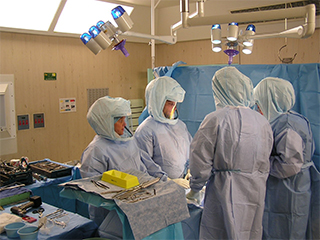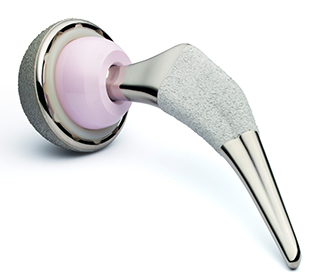Total Hip Replacement is the most successful and reliable procedure in surgery promising patients restoration of painfree mobility for years into the future. Just how many years is a function of multiple factors including the skill and experience of the surgeon. Another is the choice of bearing surface used, prompting the clinically relevant question often asked by patients:
What is my Hip Replacement made of?
The “working” part of the joint is the articulation between the ball and socket. Various materials and combinations are available and they each have their own advantages and disadvantages, but I mainly use a ceramic ball against highly cross-linked polyethylene (XLPE) placed in a metal socket.

Cross-linking Polyethylene
- Toughens the material so wear approaches ceramic or metal bearings
- Allows use of bigger heads (as thinner poly used) increasing stability
- Gives patients great confidence in their range of safe movement, and
- Their hips don’t squeak!
Ceramic ball heads
- Are extremely long-wearing
- Self-lubricate due to "wettability" of the material
- Only squeak (20%) if joined with a ceramic socket
Metal-on-Metal (MoM) hips

- Are VERY tough and durable, but
- Are also prone to squeaking
- Shed wear particles that can be toxic to tissues locally and even cause systemic illness
- Require long-term monitoring of blood Cobalt and Chrome levels
- Click here for more info.
You will need the Adobe Reader to view and print these documents. ![]()




